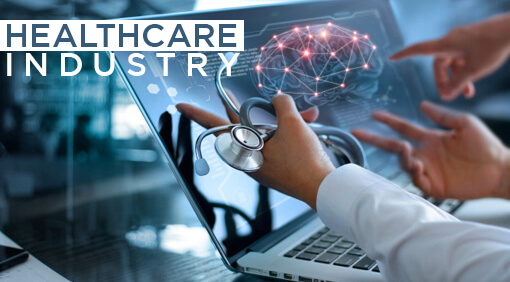The demand for electronic health record systems in healthcare continually increases as technology advances and demands for more efficient data management practices increase. As the healthcare industry is accelerating rapidly toward digital transformation, Electronic Health Record Systems (EHRS) play a significant role in improving the quality of patient care and reducing administrative costs.
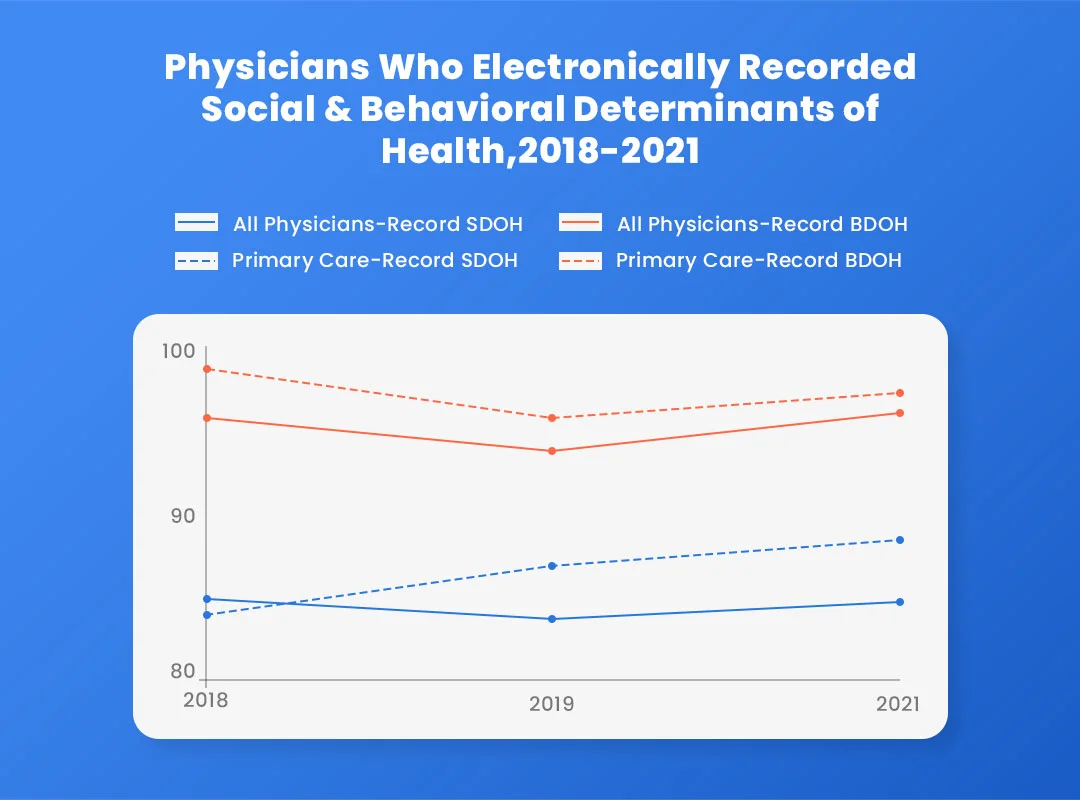
According to reports, around 85% of physicians adopted EHR systems to record SDOH data electronically. Moreover, approximately 97% of the doctors used these systems to record the BDOH data of patients. 9 out of 10 physicians in the USA have adopted a full-fledged EHR solution to record health data in 2021.
This article will explore everything about Electronic Health Record Systems, from their benefits to the various features of EHRS.
What Is An EHR System?
EHRS is a digital record of patient health information, including medical history, treatments, medications, and other relevant clinical data. In addition, it stores details about who has seen the patient and when, as well as any pre-visit tests or laboratory results that have been received from outside sources such as radiology departments.
The system can also include documents such as lab results, progress notes, x-ray reports, radiology images, and other relevant patient data. It is designed to be accessible for healthcare staff to access the required information quickly and accurately while providing care.
Compared to conventional medical record-keeping, these systems are more flexible as they can be accessed from multiple locations and devices, allowing faster patient information access. They also allow for easier data sharing and collaboration between healthcare providers, reducing the risk of miscommunication or care delays due to inaccurate information.
Features Of Electronic Health Record Systems:
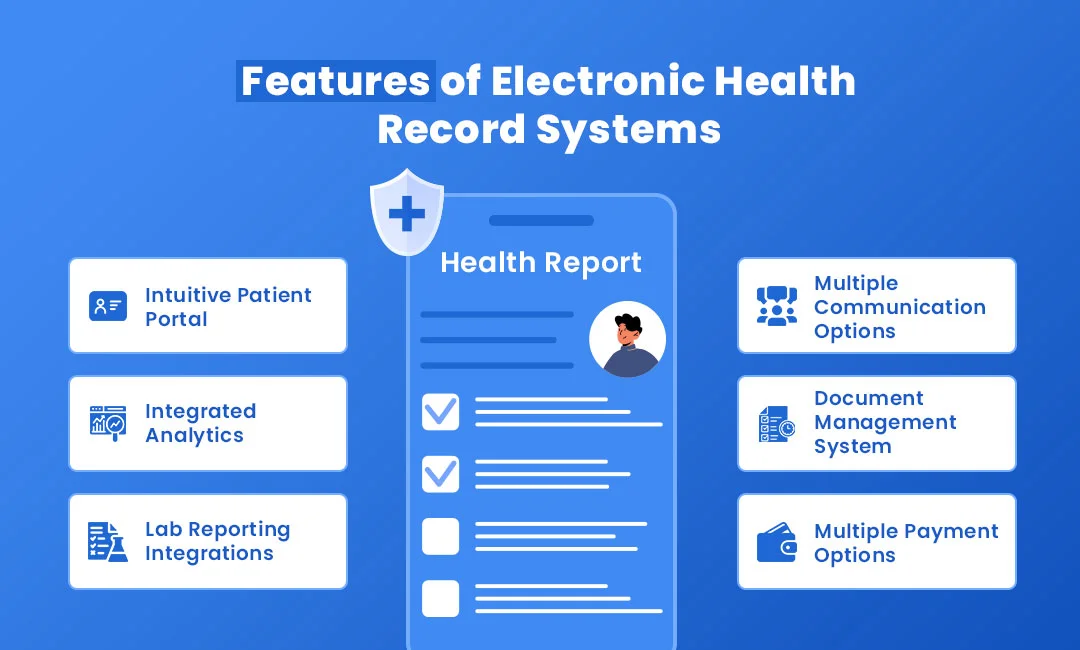
As the range of features will vary depending on the requirements of a particular healthcare provider, here are some of the features that all EHR systems should have:
1. Intuitive Patient Portal:
A patient portal allows patients to access their records and relevant information about their care, schedule appointments with healthcare providers, view invoices, receive reminders for appointments and even message their providers. This portal will help streamline communication between patients and providers, leading to improved patient engagement.
Moreover, the patient portal should allow individuals to keep track of their health history and medication regimen. Patients should be easily able to edit their records and view medical advice from their providers.
2. Multiple Communication Options:
The health record system should offer multiple communication options like email, text message, telephone, or video chat. This will make it easier for providers to communicate with each other or their patients quickly and easily. It should also provide secure messaging options so that patients can be kept informed of changes in their care plans without compromising the privacy of their data.
24×7 communication features are crucial in an EHR system because they allow providers to be available to their patients at any time, thereby improving the quality of care. In addition, end-to-end encryption should also be available to ensure that data is secure and private.
3. Integrated Analytics:
Data analysis and reporting are essential for tracking performance metrics and gaining insight into patient outcomes. Therefore, an effective EHR system should be equipped with integrated analytics tools to enable healthcare providers to generate reports quickly and accurately.
It should also have an AI-powered analytics module that can alert providers of any changes in patient health or medication regimen, helping them make informed decisions about the care they provide. Moreover, it should have the ability to create customizable reports for different stakeholders, such as insurers, hospitals, and public health authorities.
4. Document Management System:
A document management system is essential for keeping track of patient records and clinical data. It should include the ability to search for documents quickly, attach relevant files to each record, and store them in an organized way. The document management system should also be able to securely transfer files between providers or across different departments.
The system should also have robust encryption to keep medical records confidential and secure. This will help protect patient data from unauthorized access, ensuring privacy and security for all users. Moreover, it should offer end-to-end data transparency to ensure that records are kept accurate and up-to-date.
5. Lab Reporting Integrations:
An effective EHR system should be able to integrate with external lab systems to allow healthcare providers to access and analyze patient results. This will enable them to make informed decisions quickly, reducing the risk of care delays due to inaccurate data or miscommunication. The system should also be able to generate automated reports based on the medical history of an individual patient.
Seamless integration across multiple labs is necessary to ensure that all relevant data can be accessed quickly and accurately. Moreover, the system should also have advanced analytics capabilities for mining insights from patient records to understand trends and patterns better.
6. Multiple Payment Options:
An electronic health record systems software should provide multiple payment options for both providers and patients. It will enable easy and more secure transactions, making it simpler to manage patient billing information. It should also include an automated billing system to help with claims processing and reduce waste in healthcare spending.
The system should also be able to track payments across different departments or facilities and integrate with insurance providers and other third-party payers. It will help streamline the payment process, reducing the time and costs associated with billing.
How Is EHR Different From An Electronic Medical Record System?
The two terms, EHR and EMR, are often used interchangeably. However, there are distinctions between the two. An Electronic Medical Record digitizes the patient’s data into various charts and other formats and it is not intended to share outside of one hospital premises. It’s for local data communication among staff in one hospital.
On the other hand, an Electronic Health Record system is used to store and share data across multiple locations, including doctor’s offices, pharmacies, and other healthcare providers. This enables an even higher level of collaboration among these providers, which can result in better patient care.
Workflow Of EHR Systems:
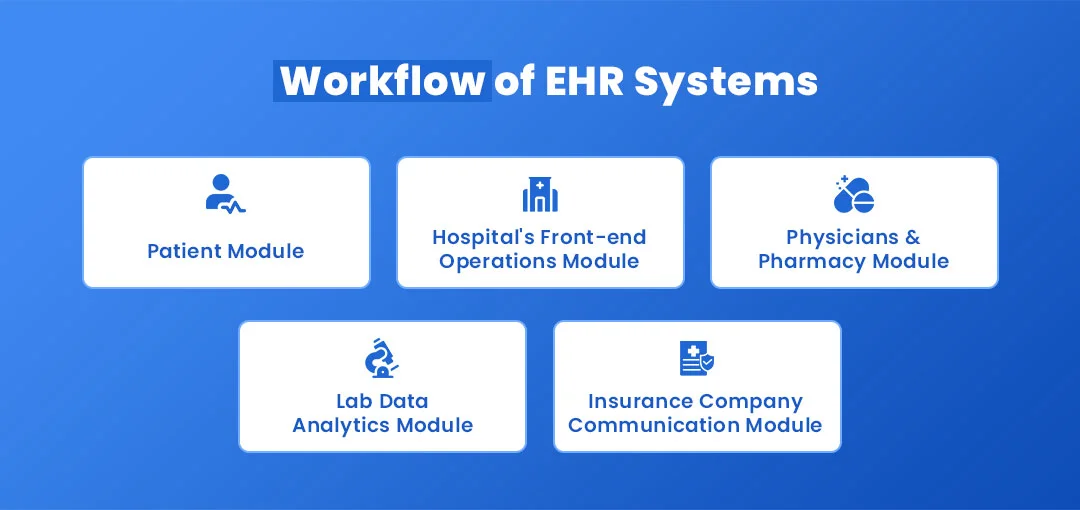
An EHR system can be used for a variety of tasks, from creating new patient records to updating existing information. The workflow typically consists of different modules and numerous operations take place in their respective modules:
1. Patient Module:
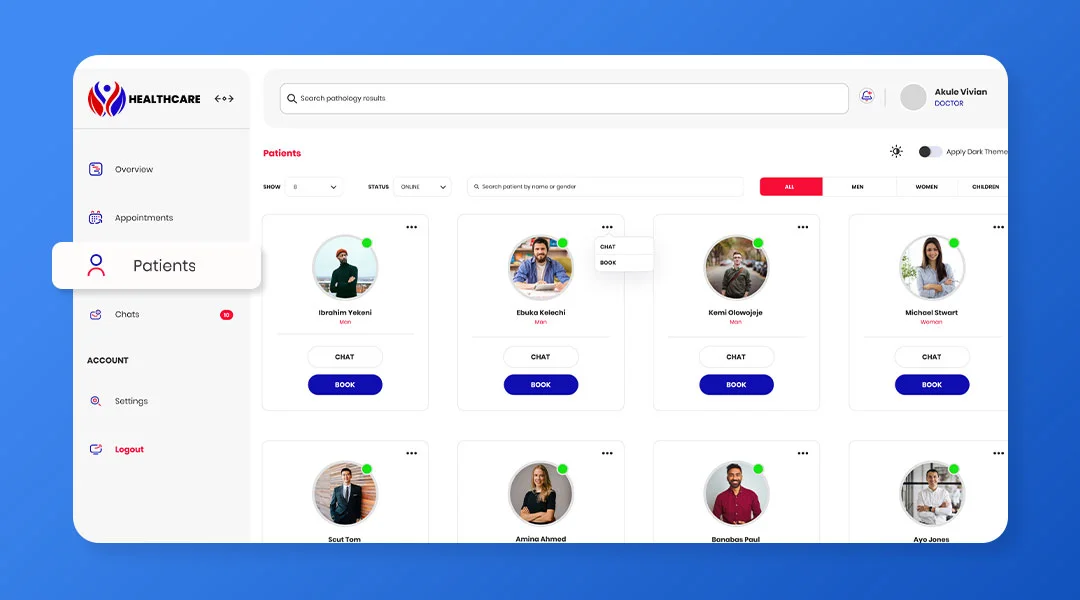
This module manages all information associated with a particular patient, such as demographics, medical history, medication allergies, and more. It also includes the ability to create new patient accounts, update existing ones, and track patient visits.
Moreover, the patient module also includes the ability to generate patient records and other related documents such as lab results, progress notes, x-ray reports, referral letters, and more. Once the registration is done, the patient’s vital signs and other health information can be captured and stored in the system.
2. Hospital’s Front-end Operations Module:
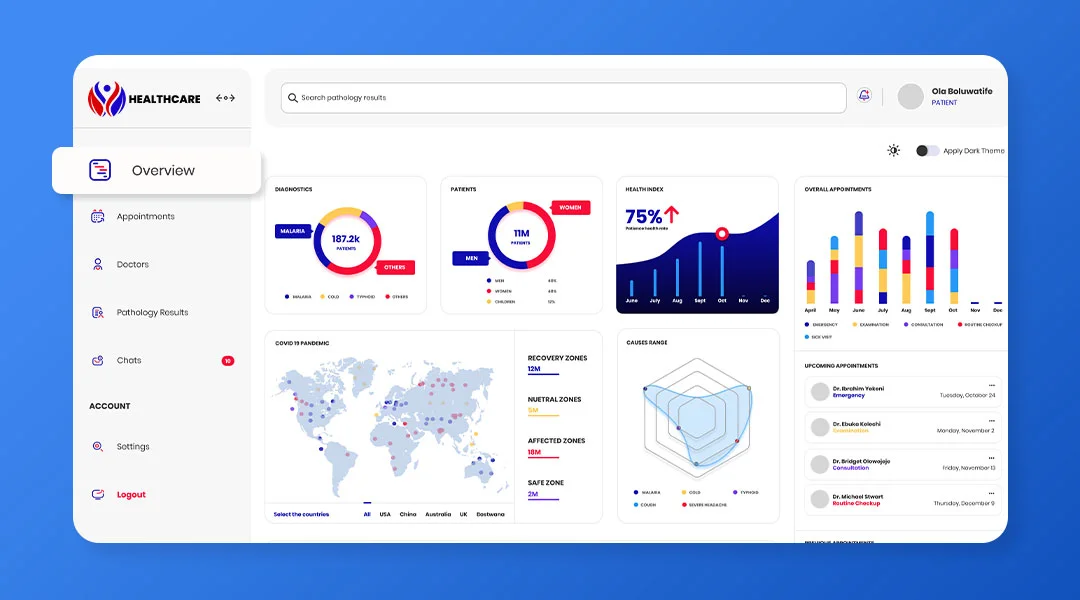
This module is responsible for managing the front-end operations such as check-in, appointment booking, and billing. It can also be used to access patient records, create and update charts, and track patient visits.
The front-end operations module plays a crucial role in improving the workflow efficiency of a hospital as it streamlines the process of patient registration, check-in, and billing. It involves an intuitive GUI and can be accessed from different devices, making it easier to manage patient data.
3. Physicians And Pharmacy Module:
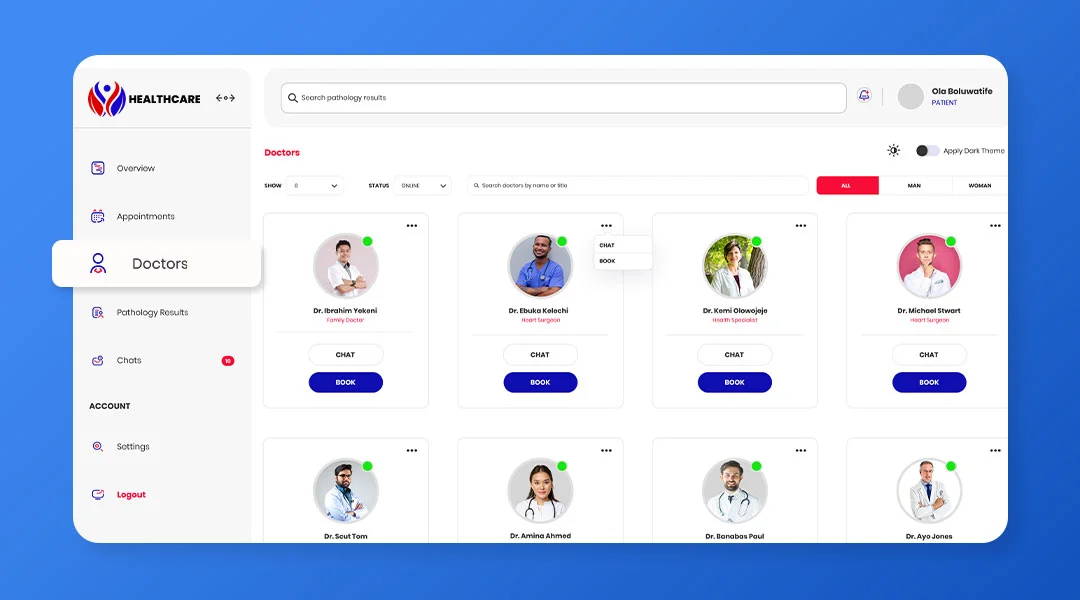
This module is used to manage the medical staff’s activities such as the ordering of tests, medications, and other treatments. It also includes features for tracking patient visits, ordering lab tests, and managing the drug inventory.
The physicians and pharmacy module is essential for ensuring that medications are dispensed accurately and safely. It is also used to manage patient-specific data such as allergies, medical conditions, and laboratory results.
4. Lab Data Analytics Module:
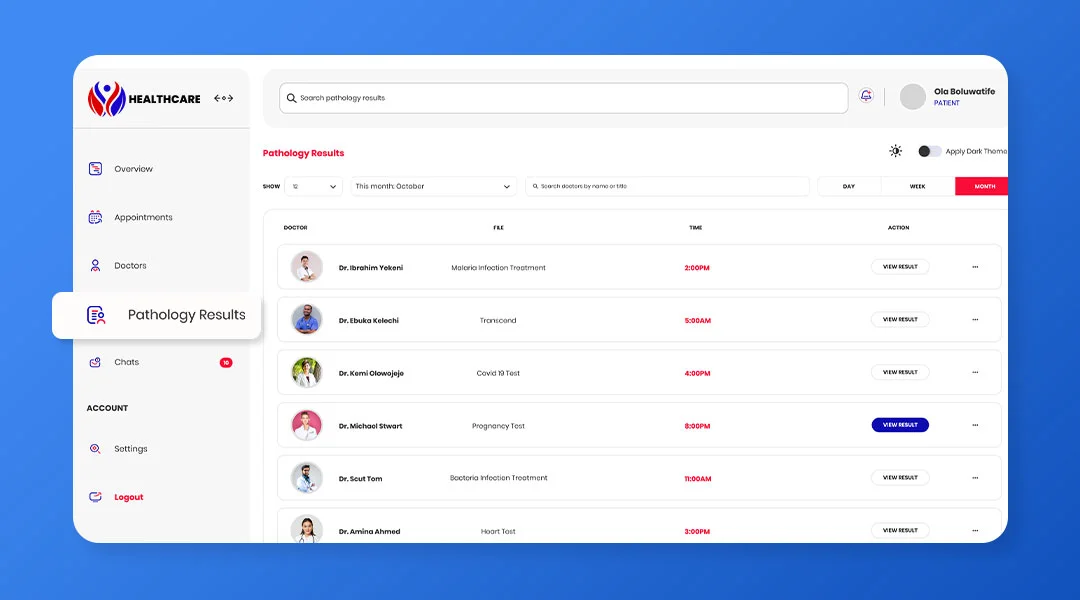
This module allows for the capture and analysis of lab results, allowing healthcare staff to detect trends in patient care. It can also generate reports that allow doctors to better assess the patient’s condition.
The lab data analytics module is a powerful tool that allows healthcare facilities to track and monitor patient care. It helps them to identify potential problems quickly and take action to prevent or mitigate any negative outcomes.
5. Insurance Company Communication Module:
This module is used to facilitate communication between healthcare facilities and insurance companies. It allows for the transfer of patient information between parties, as well as the ability to track billing and claims.
The end-to-end communication bridge between healthcare providers and insurance companies helps to ensure that the billing process is accurate and efficient. It allows for timely payments and reduces the chances of any discrepancies.
Interoperability Among Different EHR Modules:
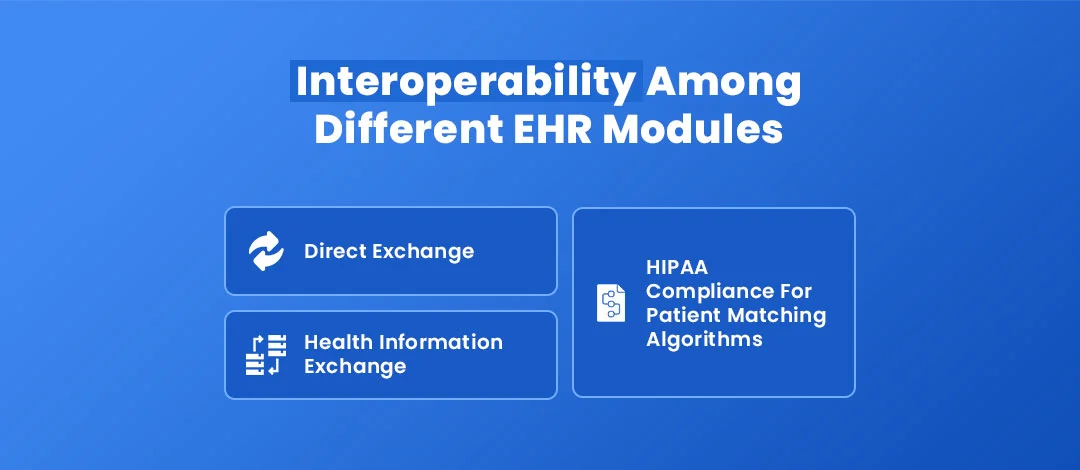
Interoperability among different EHR modules is crucial for providing quality patient care. This ensures that all the data required to provide comprehensive patient care can be accessed quickly and accurately.
1. Direct Exchange:
As per Health Insurance Portability and Accountability Act (HIPAA) security rule, direct exchange between different EHR systems allows for the secure transfer of data. This ensures that sensitive patient information is kept confidential and the data is not compromised in any way.
Direct Exchange (DE) is an end-to-end secure and encrypted email-based solution allowing for the transfer of sensitive patient information between different EHR systems. It ensures that the data is safely transferred and that only authorized personnel have access to it.
2. Health Information Exchange:
Health information exchange or HIE is an encrypted central repository of patient data that allows for the secure sharing of information between different healthcare providers. This helps to ensure that patient records are up-to-date and accurate, and that all the relevant information is available when needed.
HIE also helps to reduce costs associated with storing, managing, and accessing patient data. It ensures that all the data is kept secure and that unauthorized personnel cannot access it.
3. HIPAA Compliance For Patient Matching Algorithms:
All EHR systems operate on a matching algorithm that compares patient data to ensure that the correct records are being accessed. This helps to ensure that the right information is being provided and that all sensitive data is kept secure.
In order to ensure HIPAA compliance, the matching algorithm must be secure and cannot contain any personal information such as Social Security numbers or addresses. The algorithm must be validated and tested regularly to ensure that it is working properly and that it is secure
Benefits Of An Electronic Health Record System:
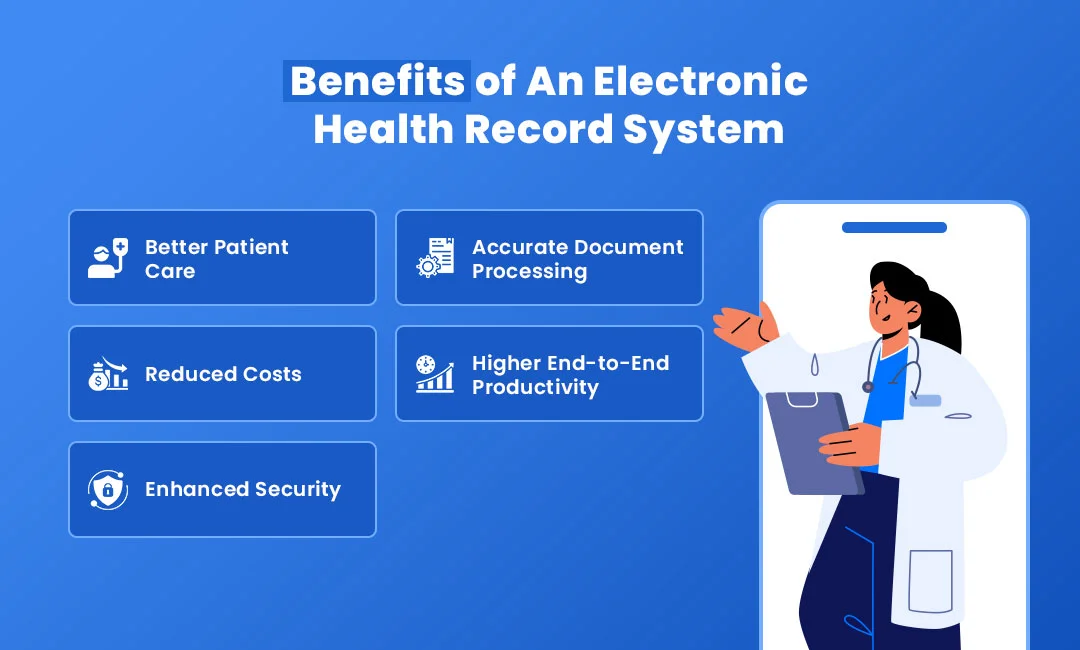
1. Better Patient Care:
By providing a comprehensive overview of patient records, an electronic health record system enables providers to make more informed decisions about care. It also allows for better communication between providers and patients, improving the quality of care delivered. There is no delay in accessing patient records, reducing the risk of medical errors and improving patient safety.
2. Accurate Document Processing:
The document management system of an EHR allows for the accurate and timely recording of patient data. This will enable healthcare providers to quickly access the information they need without having to search through paper records manually. It also ensures that data is kept secure, reducing the risk of unauthorized access or tampering.
3. Reduced Costs:
An electronic health system makes it easier to track payments and process claims, reducing the time and costs associated with billing. It also reduces paperwork by eliminating the need for manual entries, leading to a more efficient workflow. This helps healthcare providers save on labor costs and focus more resources on providing better patient care.
4. Higher End-To-End Productivity:
An effective EHR system enables healthcare providers to access patient information quickly, reducing the risk of errors and delays in care. It also allows for seamless integration across multiple departments or facilities, ensuring that all relevant data is available in one place. This can result in higher end-to-end productivity, leading to better patient and provider outcomes.
5. Enhanced Security:
Security plays a crucial role in successfully implementing an electronic health record system. The system should ensure that patient data is kept secure and private while offering end-to-end encryption to protect the data from unauthorized access. It should also include robust authentication and authorization protocols, preventing malicious actors from accessing sensitive data.
Cost To Develop An EHR Solution:
The cost of developing an electronic healthcare system can generally range between $50,000 to $120,000. However, the cost may vary depending on the complexity and scope of the project, as well as the features that you want to include. Therefore, it is crucial to assess all your needs and budget accordingly to ensure that you get the best solution for your organization. With the right software development partner like Auxano Global Services, you can get a robust solution at the best price.
Why Hire Auxano Global Services For EHR Software Development?
Auxano Global Services is the best electronic health record systems development company. As an experienced software development partner, we provide a comprehensive suite of services tailored to your needs.
Our team has extensive expertise in developing secure and reliable EHR systems that are designed to meet the highest standards. We also offer cost-effective solutions, allowing you to get the most out of your budget. Our experienced development team ensures that the system is delivered on time and within budget.
Wrapping Up!
EHRs are important tools for healthcare providers to provide better patient care. With the right software development partner, you can get a robust and secure EHR system tailored to your requirements. Hospitals can offer a transformational care experience with the help of an electronic health record system.
Frequently Asked Questions
-
1. What Is An Electronic Health Record System?
An Electronic Health Record System (EHR) is a digital system for collecting, storing, and managing patient medical records. It allows healthcare providers to quickly access the information they need without manually searching through paper records.
-
2. How Much Does It Cost To Develop An EHR Solution?
The cost of developing an electronic healthcare system can range between $50,000 to $120,000 depending upon the custom requirements, necessary features, and third-party integrations.
-
3. Who Needs An EHR System?
Any healthcare organization, clinic, or hospital can benefit from having an EHR system. Having a digital record of patient information helps healthcare providers to provide a higher quality of care. It also reduces the time spent searching for patient data, leading to a more efficient workflow.
-
4. Is An EHR Secure To Protect Patient Data?
Yes, an EHR system should include robust security protocols to ensure that patient data remains secure and private.
-
5. What Are The Benefits Of An EHR System?
An EHR system can help healthcare organizations to provide better patient care, as well as streamline processes to save time and money. It also increases the accuracy of patient data and reduces paperwork, leading to a more efficient workflow.





